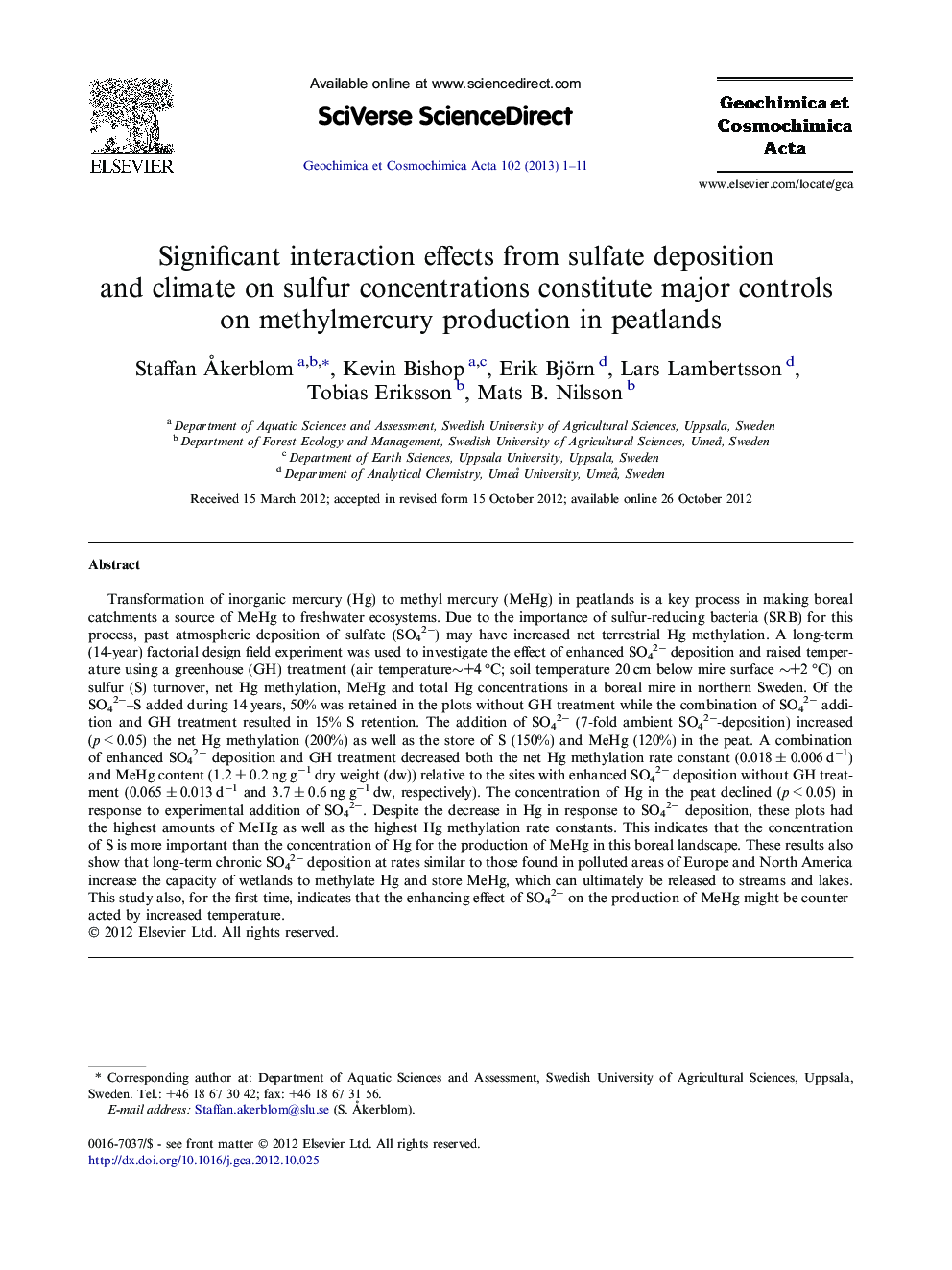| Article ID | Journal | Published Year | Pages | File Type |
|---|---|---|---|---|
| 4702566 | Geochimica et Cosmochimica Acta | 2013 | 11 Pages |
Transformation of inorganic mercury (Hg) to methyl mercury (MeHg) in peatlands is a key process in making boreal catchments a source of MeHg to freshwater ecosystems. Due to the importance of sulfur-reducing bacteria (SRB) for this process, past atmospheric deposition of sulfate (SO42−) may have increased net terrestrial Hg methylation. A long-term (14-year) factorial design field experiment was used to investigate the effect of enhanced SO42− deposition and raised temperature using a greenhouse (GH) treatment (air temperature∼+4 °C; soil temperature 20 cm below mire surface ∼+2 °C) on sulfur (S) turnover, net Hg methylation, MeHg and total Hg concentrations in a boreal mire in northern Sweden. Of the SO42−–S added during 14 years, 50% was retained in the plots without GH treatment while the combination of SO42− addition and GH treatment resulted in 15% S retention. The addition of SO42− (7-fold ambient SO42−-deposition) increased (p < 0.05) the net Hg methylation (200%) as well as the store of S (150%) and MeHg (120%) in the peat. A combination of enhanced SO42− deposition and GH treatment decreased both the net Hg methylation rate constant (0.018 ± 0.006 d−1) and MeHg content (1.2 ± 0.2 ng g−1 dry weight (dw)) relative to the sites with enhanced SO42− deposition without GH treatment (0.065 ± 0.013 d−1 and 3.7 ± 0.6 ng g−1 dw, respectively). The concentration of Hg in the peat declined (p < 0.05) in response to experimental addition of SO42−. Despite the decrease in Hg in response to SO42− deposition, these plots had the highest amounts of MeHg as well as the highest Hg methylation rate constants. This indicates that the concentration of S is more important than the concentration of Hg for the production of MeHg in this boreal landscape. These results also show that long-term chronic SO42− deposition at rates similar to those found in polluted areas of Europe and North America increase the capacity of wetlands to methylate Hg and store MeHg, which can ultimately be released to streams and lakes. This study also, for the first time, indicates that the enhancing effect of SO42− on the production of MeHg might be counteracted by increased temperature.
